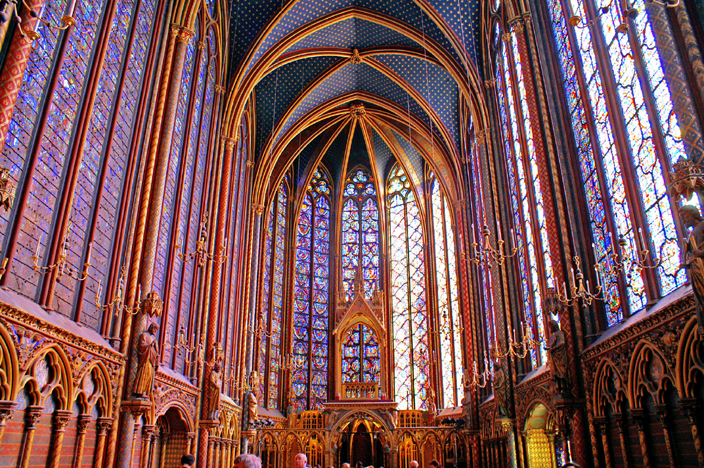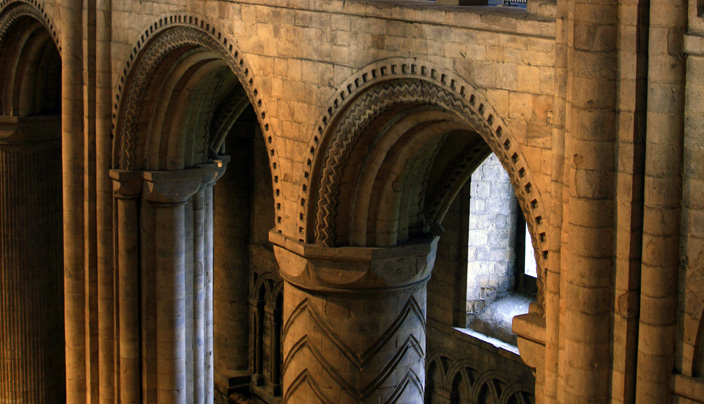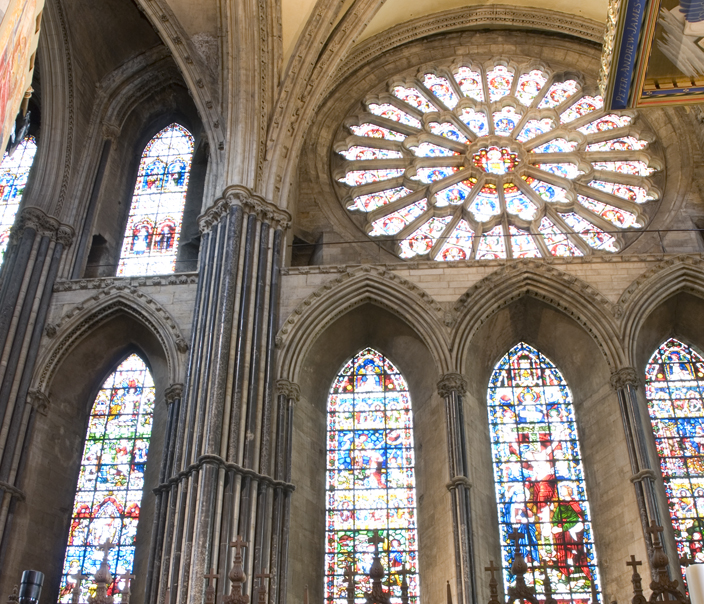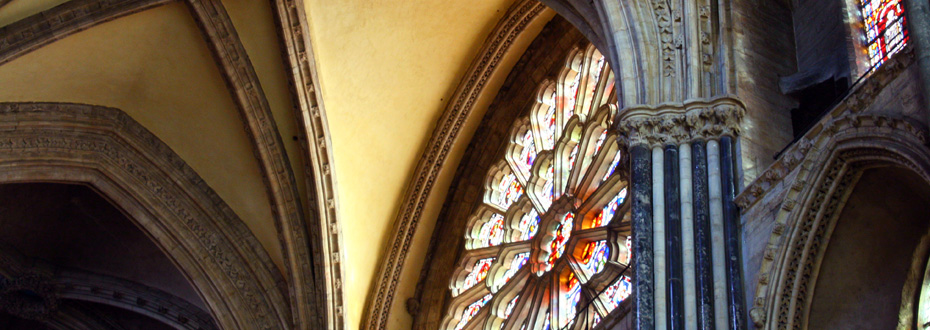The Need for an Extension
Despite the scale of Durham Cathedral, the area of St Cuthbert’s shrine wasn’t particularly large, and would have been crowded with pilgrims, and cramped.
The Chapel of the Nine Altars, constructed around 1280, was built to increase the amount of space inside the cathedral.
In providing nine new altars so close to St Cuthbert’s shrine, this chapel was ideal.
Inspiration
Constructed around 1280, the Chapel of the Nine Altars was inspired by a similar extension to Fountains Abbey in North Yorkshire, completed in 1247.
Suitability
Wider than it is long, this type of extension was suitable in Durham because of the sloping topography of the nearby river-bank that would have made a long, narrow extension difficult.
How it was Built
The bedrock beneath the site of the chapel was several metres lower than the rest of the cathedral, which meant that the chapel itself had to be built lower as well.
How the Chapel of the Nine Altars Differs from the Main Part of the Cathedral
The most significant architectural aspect of the Chapel of the Nine Altars is that, true to the gothic style, it comprises large expanses of glass rather than expanses of stone (unlike Norman architecture).
This was related to the development of building technology in the 200 years since work first started on the cathedral. A better understanding of how to handle loads enabled slender structural elements, such as groups of columns, to support the weight of a roof, making the massive stone walls and columns of the original part of the cathedral unnecessary.
One of the most successful examples of the triumph of glass over stone in gothic architecture is see the Sainte Chapelle in Paris, completed in 1246, shown below.

Interior view of the upper chapel of the Sainte Chapel in Paris, constructed in 1246, and a perfect example of how architectural technology had overcome the technical challenges of creating light, airy buildings out of stone.

The Norman section of Durham Cathedral, seen above, is characterised by its solidness, most notable in its robust columns and small, round-arched windows. In the two centuries that followed, architectural technology and, consequently, architectural conventions, evolved greatly, making the Chapel of the Nine Altars, seen below, possible.
© Durham Cathedral and Jarrold Printing

The Chapel of the Nine Altars differs markedly from the rest of Durham Cathedral in that it consists of large expanses of glass, soaring pointed vaults, and similarly-shaped arches. The result is that much more light enters this section of the building.
© Durham Cathedral and Jarrold Printing

